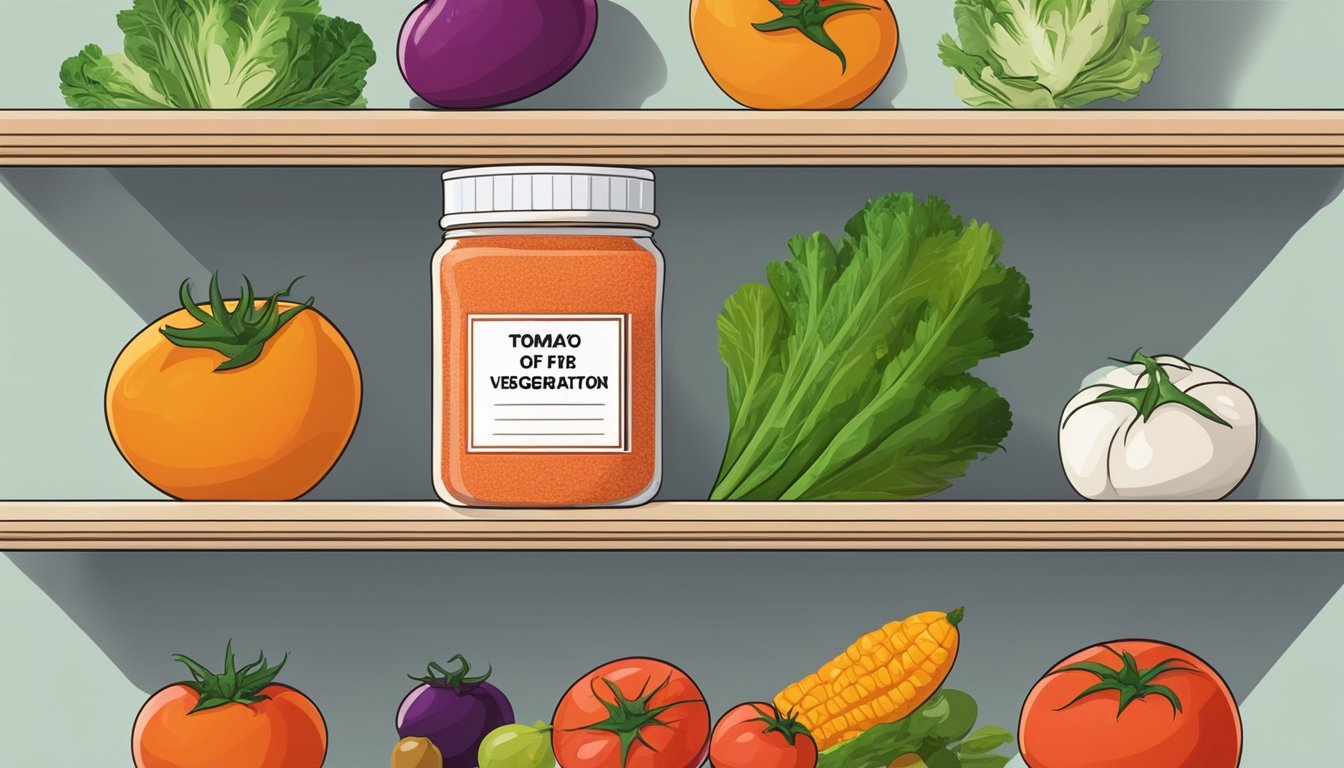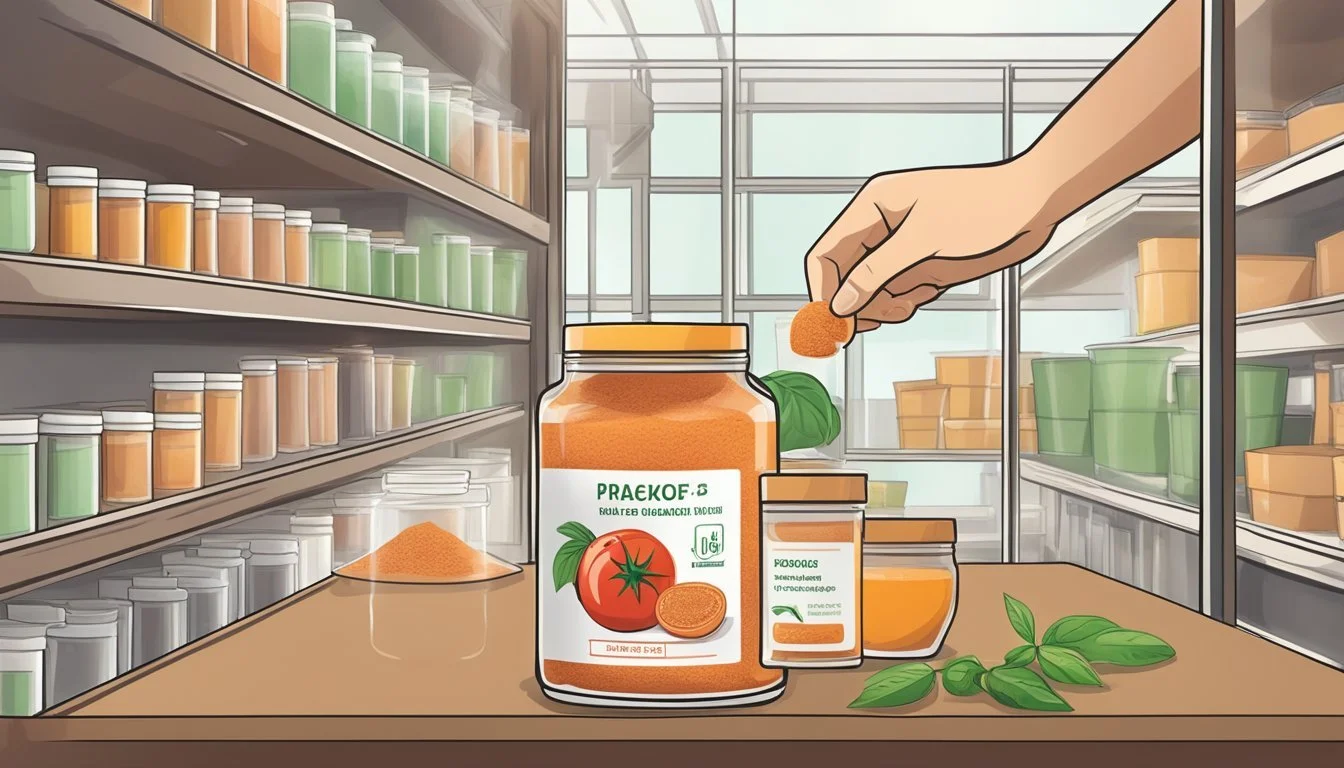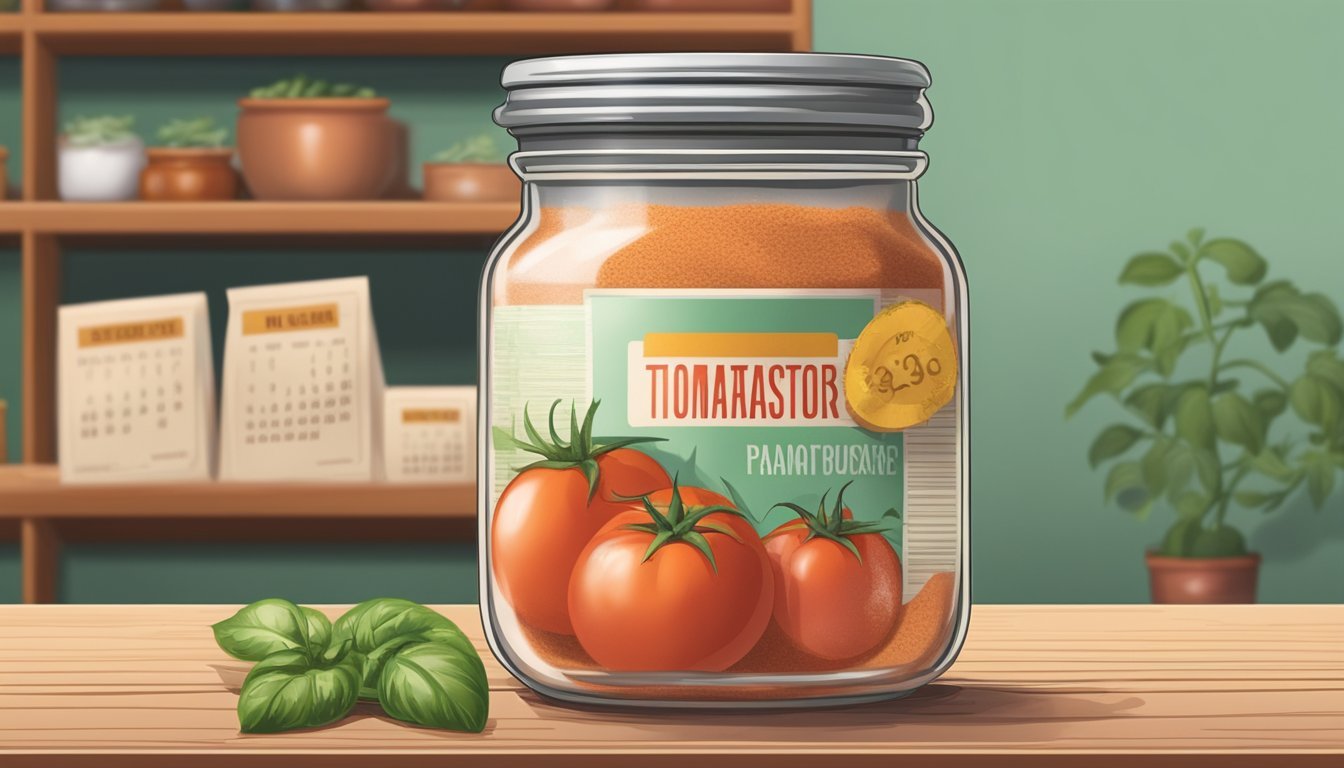How Long Does Tomato Powder Last?
Shelf Life and Storage Tips
Tomato powder (how long does tomato powder last?), with its versatility and rich concentration of flavor, is a staple in many kitchens. As a dehydrated form of tomatoes, it embodies all the flavor and nutrition of fresh tomatoes in a convenient, space-saving form. This pantry item is widely appreciated for its long shelf life, offering the essence of tomato even when fresh produce is out of season or unavailable. It's particularly sought after by those looking to enhance their dishes with the robust taste of tomato without the added moisture of fresh tomatoes or canned products.
Understanding the shelf life of tomato powder is essential for both home cooks and professional chefs to ensure they're using a product that maintains its quality and taste. Under optimal storage conditions—cool, dry, and away from direct light—tomato powder can remain at peak quality for up to a year, and in some cases, even longer. An unopened package can potentially last even beyond this period when stored correctly, while an opened package of tomato powder typically has a useful life span of six to twelve months before its flavor begins to notably degrade.
The use of tomato powder is remarkably versatile, lending itself to a myriad of culinary applications. It can be incorporated into seasonings, used as a thickener for sauces and soups, or simply reconstituted into pastes or sauces. This versatility, coupled with its extended shelf life, makes tomato powder an invaluable ingredient in both commercial and home settings where the depth of tomato flavor is desired without the perishability of fresh tomatoes.
Understanding Tomato Powder
Tomato powder is a concentrated product made from ground, dried tomatoes, often valued for its versatility as a seasoning and its long shelf life in food storage.
Origins and Production
Tomato powder originates from dehydrated tomatoes, where ripe tomatoes are processed into a dried form and then finely ground to create a fine powder. This production process typically involves a food processor or a specialized grinder. The dehydration process concentrates the tomatoes' natural flavors, resulting in an intensely flavored product.
Nutritional Profile
Nutritionally, tomato powder is rich in fiber, potassium, and vitamin A, while also providing protein and essential nutrients. It contains calories, carbohydrates and a minimal amount of fat. Here is a basic nutritional breakdown of tomato powder per 100 grams:
Calories: Low
Carbohydrates: Moderate
Fiber: High
Protein: Low to moderate
Fat: Low
Potassium: High
Vitamin A: High
Common Uses
Tomato powder serves primarily as a food ingredient and seasoning, imparting a concentrated tomato flavor to a variety of dishes. It finds its use in soups, stews, rubs, and as a flavor enhancer for snacks. Notably, it does not typically contain added salt, making it a pure addition that allows for controlled seasoning in recipes.
Making Tomato Powder at Home
Creating tomato powder at home is a simple yet effective way to preserve the rich flavor of tomatoes. By following a few crucial steps and utilizing the right tools, one can ensure a successful transformation of fresh tomatoes into a versatile, long-lasting pantry staple.
Required Tools and Equipment
For those embarking on the journey of making homemade tomato powder, having the proper tools and equipment is essential. A food dehydrator or an oven capable of low, steady temperatures is required for dehydrating the tomatoes. Once dried, a blender or coffee grinder will be necessary to pulverize the dehydrated pieces into fine powder.
Dehydrator or Oven
Blender or Coffee Grinder
Airtight storage containers
Choosing the Right Tomatoes
Selecting the appropriate type of tomatoes is the first step in ensuring a high-quality final product. One should look for ripe tomatoes, as they provide the best flavor and color. Both cherry tomatoes and larger varieties can be used, but it is crucial to remove any seeds and skins before dehydrating.
Use ripe tomatoes for optimal flavor.
Choose between cherry tomatoes or larger varieties.
Remove skins and seeds prior to drying.
The Dehydration Process
The process of dehydrating tomatoes is straightforward but requires attention to detail. One must slice the tomatoes uniformly to ensure even drying and set the dehydrator or oven to a low temperature, typically around 135°F (57°C) for a food dehydrator and the lowest setting for an oven. The drying process can take between 8-12 hours depending on the moisture content of the tomatoes and the thickness of the slices. After the tomatoes are fully dehydrated and cooled, they should be ground into powder using a blender or coffee grinder.
Slice tomatoes evenly for consistent drying.
Dehydrate at 135°F (57°C) in a food dehydrator or at the lowest oven setting.
Drying time: approximately 8-12 hours.
Once the tomatoes are transformed into a fine powder, it should be stored in airtight containers to protect it from moisture and to preserve its shelf life.
Storage Guidelines
Proper storage is essential to maximize the shelf life of tomato powder. Ensuring ideal conditions and effective packaging methods will prevent degradation of quality.
Ideal Storage Conditions
Tomato powder should be stored in a cool, dry place away from direct sunlight to preserve its flavor and color. A pantry or a cupboard away from heat sources such as stoves or ovens offers an appropriate environment. Maintaining a consistent temperature helps in prolonging its usability.
Effective Packaging Methods
To retain the powder's quality, it should be kept in airtight containers. Options include:
Mason jars with a tight seal
Vacuum-sealed bags
Containers with oxygen absorbers
Airtight containers not only keep out moisture and air but also protect the tomato powder from absorbing odors.
Shelf Life and Spoilage Signs
The general shelf life of tomato powder is:
Unopened: Up to 2-3 years when stored correctly
Opened: 6-12 months, maintaining optimal conditions
Signs of spoilage include:
Clumping from moisture exposure
Off smell or color changes
Presence of mold
Monitor the powder regularly, and if stored in a refrigerator, ensure containers are moisture-resistant to prevent spoilage.
Using Tomato Powder
Tomato powder is a versatile ingredient that can transform into a variety of tomato-based products and enhance the flavor profile of numerous dishes. It serves as a reliable pantry staple with its ready-to-use form and shelf-stables qualities.
Reconstitution into Tomato Sauce
To create tomato sauce from powder, blend 2/3 cup of tomato powder with 2 cups of water. This mixture will yield approximately one 15 oz can of tomato sauce. For smaller quantities, adjust the ratio accordingly.
Cooking and Recipe Integration
Tomato powder easily incorporates into recipes. It can fortify the essence of tomato soup and intensify the tomato flavor in sauces, stews, and chili. When added to meatloaf or meatballs, it enhances the savoriness without altering the texture. For marinara or spaghetti sauce, start with a base of reconstituted tomato paste made from powder.
Dry Rubs & Seasonings: Mix with herbs for a rich tomato base.
Rice & Pasta Dishes: Stir into Spanish rice or pasta to deepen the flavor.
Vegetables & Eggs: Sprinkle on roasted vegetables or scrambled eggs for a burst of flavor.
Creative Culinary Applications
Tomato powder is not only for traditional uses; its potential extends into creative culinary applications. Mix it into mayonnaise to create a delectable tomato aioli or whip up a rapid pizza sauce with added herbs and olive oil. For a snack twist, blend it with salt and sprinkle on popcorn.
Vinaigrettes & Dips: Combine with oil and vinegar for a tangy dressing or stir into veggie dips for a zesty kick.
Custom Enhancements: Create homemade ketchup, barbecue sauce, or enchilada sauce by starting with tomato powder as a base.
By understanding its functions, chefs and home cooks alike can employ tomato powder as a substitute or enhancement in a wide array of recipes.
Tips and Tricks
To ensure that tomato powder retains its vibrant flavor and color while also ensuring it lasts as long as possible in storage, one must apply certain methods. These include enhancing its inherent qualities, employing strategies to maximize its shelf life, and understanding its versatile uses.
Enhancing Flavor and Color
To enhance the flavor of tomato powder, one can mix it with complementary seasonings like oregano, basil, or garlic powder. This combination can be used to bolster the taste profile of tomato-based dishes. For improving color, it's advisable to store the powder in a dark, airtight container, as light exposure can fade its rich red hue.
Longevity Maximizing Strategies
Storage Conditions: Keep tomato powder in a cool, dry place away from sunlight to prolong its life.
Airtight Containers: Use vacuum-sealed bags or containers with tight-fitting lids to minimize exposure to moisture and air.
Monitoring: Check regularly for signs of clumping or discoloration which can indicate moisture intrusion or degradation.
Alternative Uses and Substitutions
Tomato powder is quite versatile and can be rehydrated to create pastes, sauces, or juices. The following table shows how to reconstitute tomato powder for different preparations:
To Make Combine Tomato Paste 6 tbsp tomato powder + 1/2 cup water Tomato Sauce 2/3 cup tomato powder + 2 cups water Tomato Juice 1 cup tomato powder + 8 cups water
Tomato powder can also replace fresh tomatoes in the off-season to infuse dishes with a similar flavor and color.
Health and Dietary Considerations
When considering the inclusion of tomato powder in one's diet, it is crucial to take into account personal health conditions, potential allergens, and whether the product aligns with dietary restrictions. Tomato powder, as a derivative of whole tomatoes, carries the original benefits of the fresh fruit, including vitamins and antioxidants, without added preservatives.
Allergies and Food Sensitivities
Individuals with known allergies to tomatoes should avoid tomato powder as it contains concentrated amounts of the allergen. Signs of an allergic reaction can include itching, swelling, and gastrointestinal discomfort. For those with sensitivities, tomato powder is a gluten-free product, making it suitable for those with celiac disease or non-celiac gluten sensitivity.
Dietary Restrictions Compatibility
Tomato powder is highly compatible with various dietary restrictions, given its singular ingredient – tomatoes. It fits well within vegan, vegetarian, and paleo dietary plans. For those adhering to a low-sodium diet, tomato powder provides flavor enhancement without the excess salt commonly found in processed foods. It's important for individuals to check the packaging for any additional ingredients that may conflict with their dietary restrictions.
Purchasing and Sustainability
When considering the purchase of tomato powder, consumers should evaluate both availability and sustainability. Factors such as the presence of additives, the method of dehydration, and the ethical implications of production are pivotal.
Where to Buy
Tomato powder can be purchased at various outlets – from health food stores to online retailers. It often comes without additives or preservatives, offering a pure tomato ingredient for consumers looking for a healthier option. Those opting for homemade tomato powder traditionally utilize dehydrated tomatoes; this can be done through air-drying or using a dehydrator, followed by grinding the dehydrated pieces into a fine powder.
Retailers to Consider for Purchase:
Health food stores
Online marketplaces
Specialty spice shops
Environmental Impact and Ethics
The production and consumption of tomato powder have an environmental footprint that requires consideration. The dehydration process is energy-intensive, but when compared to freezing, it results in a product that has a considerably longer shelf life, thereby potentially reducing food waste. Food storage of tomato powder is efficient; it occupies less space and does not necessitate refrigeration.
Tomato powder can be viewed as a more sustainable option if it adheres to ethical production practices, such as:
Use of solar dehydrators
Sourcing tomatoes from farms that engage in responsible land use
Ensuring fair labor practices
Furthermore, consumers who opt for homemade tomato powder can control the sourcing of their tomatoes, such as by choosing locally-grown tomatoes or those grown in sustainable agriculture systems. This act benefits the environment by reducing transportation-related carbon emissions and supports local economies. Before processing, tomatoes should be blanched to remove the skins easily, which can then be ground into powder.
Conclusion
Tomato powder is a valuable asset in one's culinary arsenal with its extensive shelf life and multiple uses. When properly stored in a cool, dry place, an unopened container of tomato powder can retain its quality for up to 8 years. Once opened, it remains viable for 6 to 12 months. It is imperative that the container is well-sealed to prevent moisture ingress, which could compromise the powder's longevity.
The properties of tomato powder that users appreciate are the absence of additives or preservatives, making it a pure and healthy choice. The shelf stability of tomato powder makes it particularly reliable during emergencies or for long-term food storage.
Incorporation of tomato powder into dishes brings a richness of flavor, offering not just convenience but also a boost in nutritional value typical of tomatoes. The confidence with which a person can incorporate tomato powder into their kitchen is bolstered by the knowledge of its durable nature.
One should ensure to keep tomato powder away from direct sunlight and sources of heat, which can lead to clumping or degrading of flavor. By diligently monitoring storage conditions and keeping the container sealed, the quality and efficacy of tomato powder as a kitchen staple can be confidently maintained.








